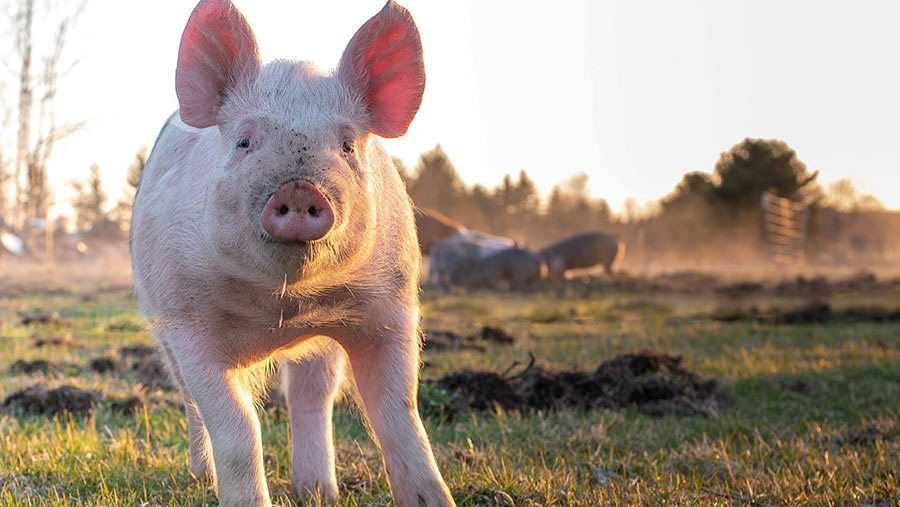Pig vaccination without needles – how it works
 © In His Image/Adobe Stock
© In His Image/Adobe Stock Needleless vaccination is growing in popularity among pig producers. Vet Julia James of Larkmead Veterinary Group explains the benefits and what vaccinations are available in this form.
See also: Farmer Focus: Learning and moving on from PRRS outbreak
About the author
Julia James is a practice partner at Larkmead Veterinary Group. She grew up on the family farm with 200-head of cattle. She is part of the Larkmead’s pig team, advising on preventative health and management for over 30,000 breeding sows and their associated weaners, growers and finishers across the south of England.
What is needleless intradermal vaccination?
Over the past year or so, some of our pig farmers have swapped to using needleless intradermal vaccination.
This is a method that delivers the vaccine into the outer layers of the skin, rather than the commonly used intramuscular or subcutaneous route.
Although considered a relatively new delivery method, it is, in fact, how the first-ever vaccines in humans were given for smallpox in the late 1700s.
They were administered by scarification (scratching into the top layer of skin).
Vaccines contain weakened or dead bacteria or viruses that are enough to trigger an immune response as if the real pathogen was invading the body.
This immune response is a complex chain of events involving many different types of white blood cells: macrophages, B- lymphocytes and T-lymphocytes.
Once vaccinated, the body is left with a supply of these cells that are primed to fight the specific infection, should it be encountered in the future.
Benefits of skin for vaccination
The skin possesses multiple properties that make it an excellent site for vaccination: it is easily accessible and rich in many of the different immune cells that play a significant role in producing a good and lasting immune response.
Over the past few decades, in the race to develop new vaccination technologies, there has been a renewed interest in the intradermal tissue as a target site.
This is because it may enable dose sparing and broader immunogenicity compared with injections into the muscle.
The needleless guns work by jetting a small amount of vaccine under pressure at a velocity of about 100m/sec through the outer layer of skin and into the dermis.
Benefits of needleless vaccination
The process takes under 0.3sec, and is not as painful as injecting through a needle. It has been proven to cause less stress to the animal.
The needleless vaccination also limits the risk of disease transmission between pigs.
Many pathogens – such as porcine reproductive and respiratory syndrome (PRRS) and porcine circovirus type 2 (PCV2) – can be found in infected animals in the blood and tissue fluids.
Much smaller vaccine volumes are required – 0.2ml compared with 2ml – and this reduces the risk of side effects.
There are added benefits for farmers, too:
- The vaccines are quicker to use
- No need to frequently change needles
- Reduced risk from self-injection or needle breakages.
In some cases, using a bracket-mounted device can also reduce the need for additional staff to assist with vaccination, especially on busy weaning days.
Which vaccines are available?
Intradermal vaccines for pigs are available for use against PRRS, Mycoplasma hyopneumoniae, PCV2, and Lawsonia intracellularis, the cause of ileitis.
There is also the possibility of using Mycoplasma hyopneumoniae and PCV2 combined in a single intradermal dose.
In human medicine, the intradermal vaccination method is currently being used to protect against the recent flare-up of monkeypox cases in the UK.
The intradermal method is also being considered for Covid-19 vaccination to mitigate global supply issues, as a much smaller volume of vaccine is required, and to help reduce costs.
